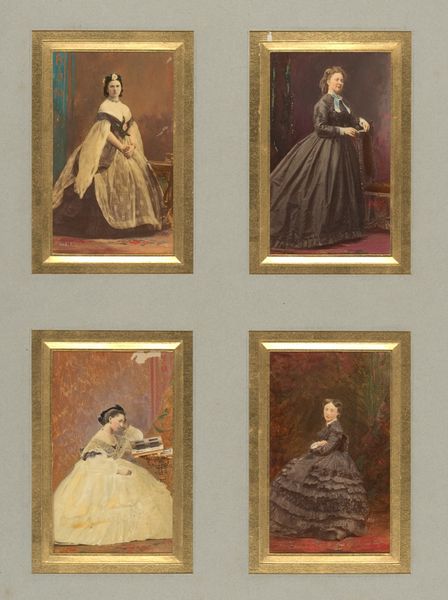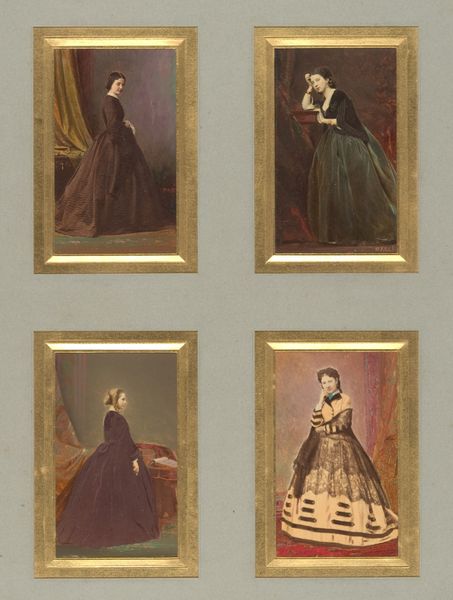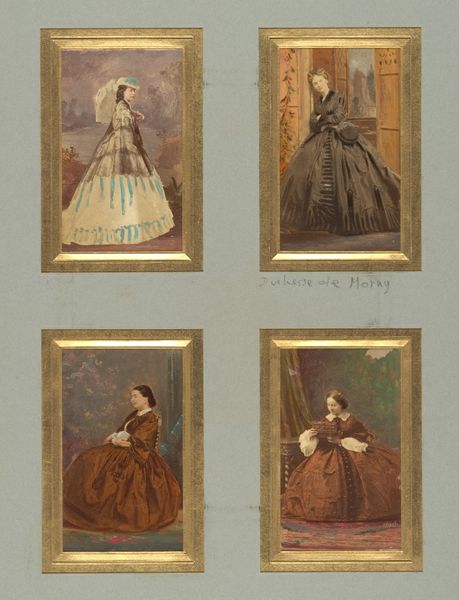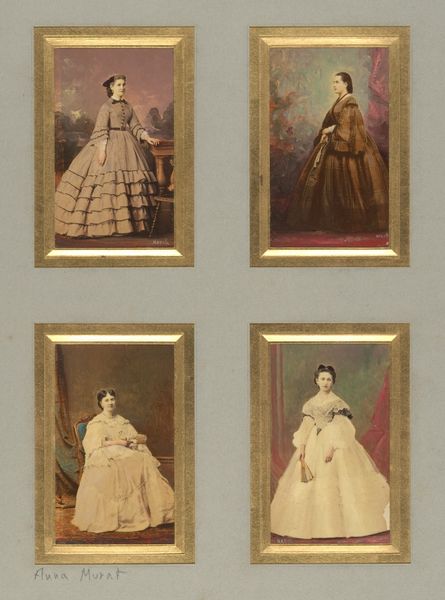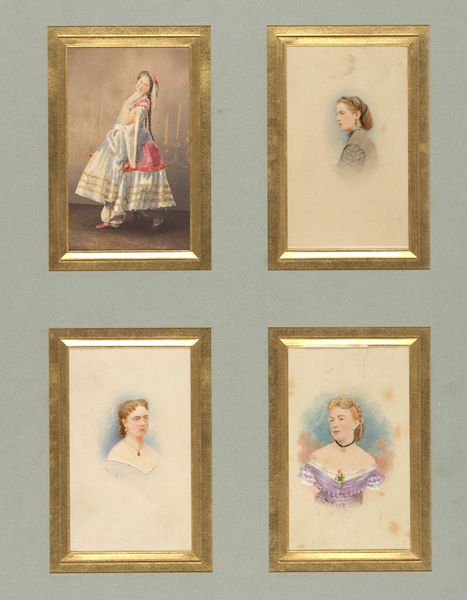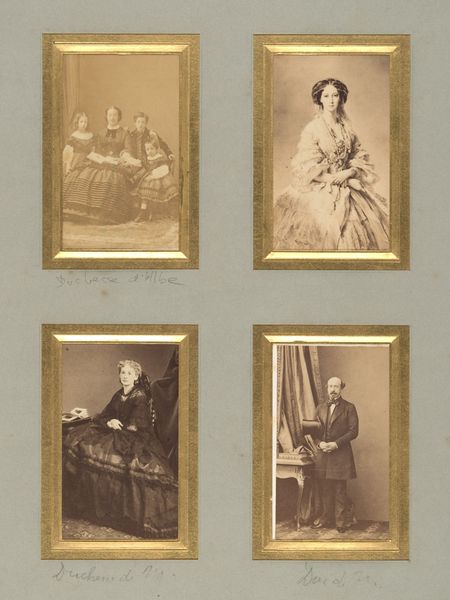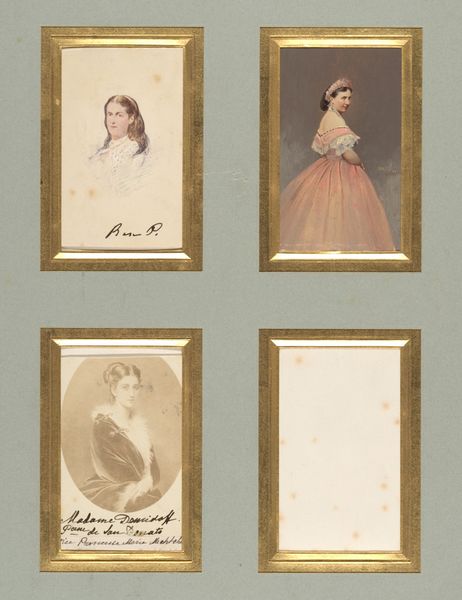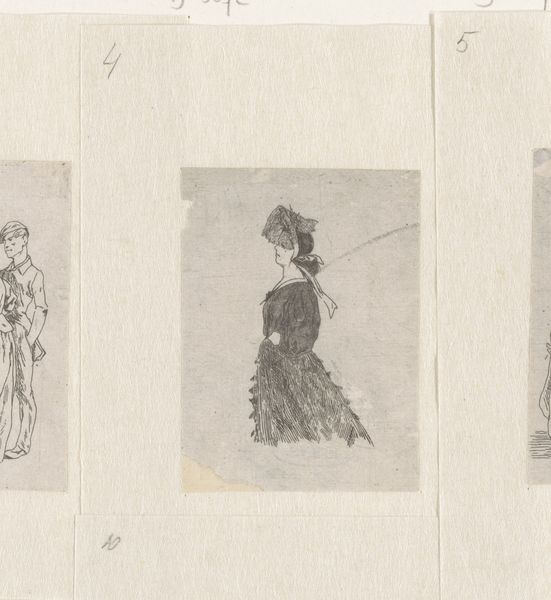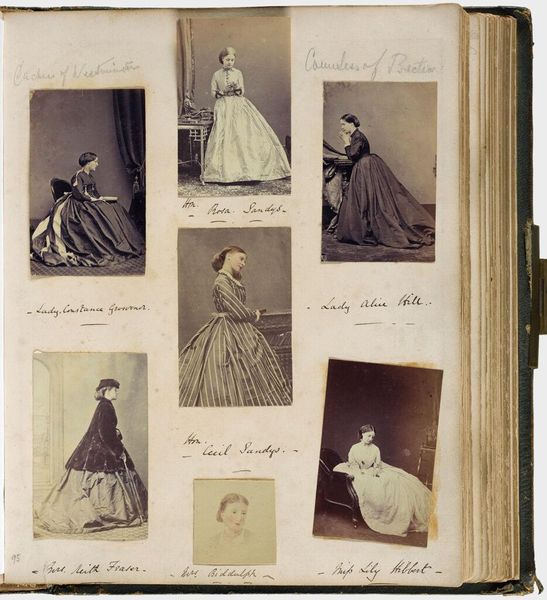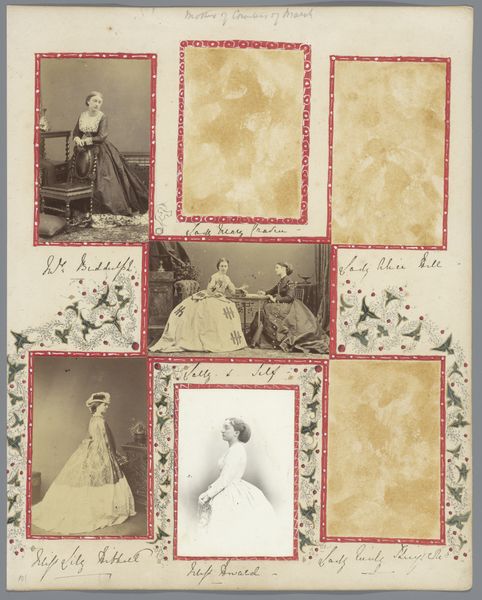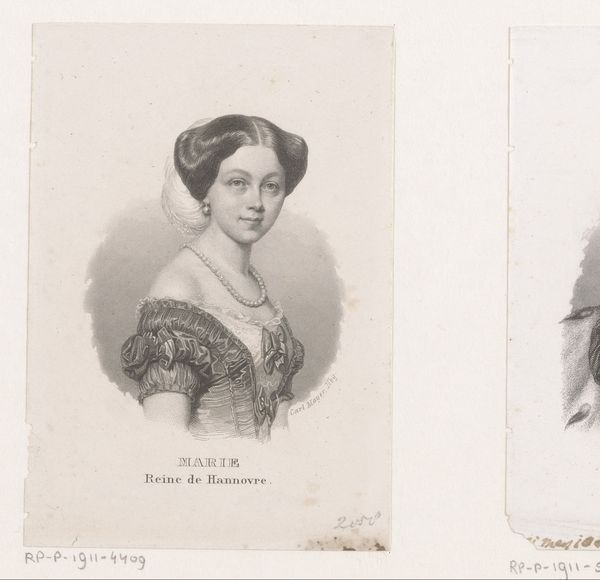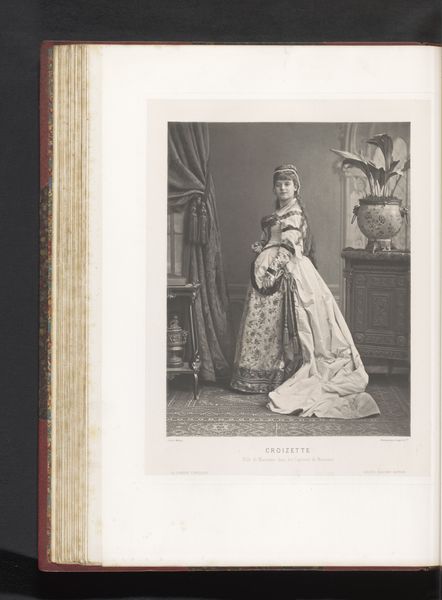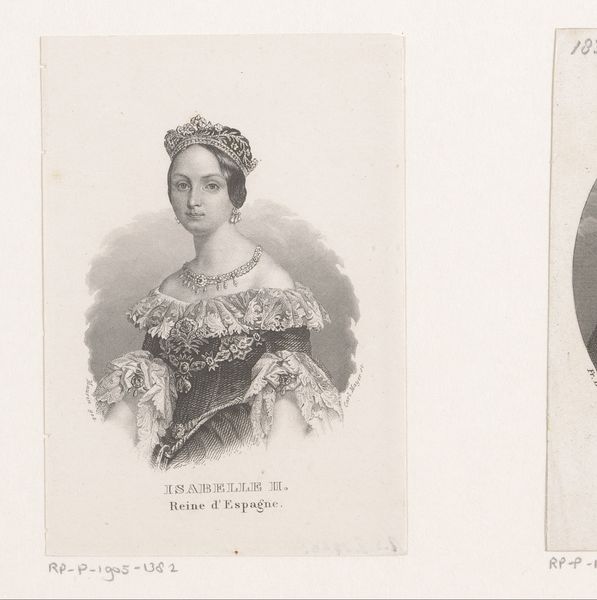![[Comtesse Walewska and Princesse Jaochim Murat] by Pierre-Louis Pierson](/_next/image?url=https%3A%2F%2Fd2w8kbdekdi1gv.cloudfront.net%2FeyJidWNrZXQiOiAiYXJ0ZXJhLWltYWdlcy1idWNrZXQiLCAia2V5IjogImFydHdvcmtzL2IxOTVhODhhLTA1ZTctNDc0Zi1hYzQ2LWMyMzBhNGNhMzM4Mi9iMTk1YTg4YS0wNWU3LTQ3NGYtYWM0Ni1jMjMwYTRjYTMzODJfZnVsbC5qcGciLCAiZWRpdHMiOiB7InJlc2l6ZSI6IHsid2lkdGgiOiAxOTIwLCAiaGVpZ2h0IjogMTkyMCwgImZpdCI6ICJpbnNpZGUifX19&w=3840&q=75)
[Comtesse Walewska and Princesse Jaochim Murat] 1855 - 1865
0:00
0:00
photography
#
portrait
#
figuration
#
photography
#
group-portraits
Dimensions: Image: 3 3/8 in. × 2 in. (8.6 × 5.1 cm) (each)
Copyright: Public Domain
Editor: This is Pierre-Louis Pierson’s photograph, "[Comtesse Walewska and Princesse Jaochim Murat]", dating between 1855 and 1865. It's held at The Met. What strikes me immediately is the almost performative nature of these portraits – the women seem to be acutely aware of the camera and their presentation. How do you interpret this work? Curator: This photograph, seemingly a set of carte-de-visite portraits, offers a fascinating insight into the intersection of aristocracy, celebrity, and early photographic practices. Pierson was very active during the Second Empire and very involved in celebrity culture. These women were highly visible figures. The portraits feel constructed, because the act of photography itself, particularly back then, was inherently theatrical, and because Pierson worked to manipulate these images with retouching and hand-coloring to project certain aristocratic identities. Notice how similar they look despite the differences in color. Editor: That’s a great point about retouching for aristocratic image-making. I guess I hadn't considered how manipulated these photographs would be at that point. How does that inform the broader social and cultural role of photography at this time? Curator: Precisely! It speaks to the power of photography as a tool for constructing and disseminating idealized images. These portraits would circulate, reinforcing particular notions of beauty, status, and feminine identity. Consider the impact on society – these images helped to manufacture fame and influence, especially for women tied to imperial politics. They projected a certain power. Did they truly possess this power? Or was this performative? What’s presented isn't necessarily real. Editor: That really shifts my perspective. So it's not just about documenting these women but about building a brand, so to speak, a carefully crafted persona. I didn't realize that image-making had already come this far at that time. Curator: Exactly. And remember, photography, like any art form, never exists in a vacuum. Its impact is shaped by who has access, who controls its narrative, and who benefits from its circulation. These kinds of celebrity portraits solidified hierarchies, creating a visible upper class at a time of increasing political unrest in France. Editor: Thank you, this was insightful! I am off to review this topic further. Curator: Indeed, so many layers to explore.
Comments
No comments
Be the first to comment and join the conversation on the ultimate creative platform.
